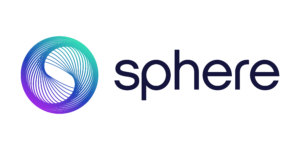
Introduction
Sphere has built enterprise-grade highly scalable and reliable platform by creating number of innovations on best of breed technologies to help Governments, NGOs and businesses to AI-driven solutions for compliance, governance, and operations.
The architecture is modular and highly scalable design presented as a layered system.
Here’s a breakdown of each layer:
- Data Ingestion and Web Scraping & ETL: This layer is capable of ingesting data from various input from diverse sources from on-prem as well as cloud sources such as:
- Enterprise Applications
- Web Applications
- File Servers
- Object Stores such OCI, S3, GCP Cloud Storage and Azure Blob Storage
- Hosted APIs
- Infrastructure Layer: This is the foundational layer, providing the underlying computing resources. The architecture is highly flexible, cloud-agnostic, designed to be deployable on multiple leading cloud platforms. This layer provides the raw compute, storage, and networking capabilities. It lists several major cloud providers:
- Oracle Cloud
- Azure (Microsoft)
- AWS (Amazon Web Services)
- Data Layer: Description: This layer handles data storage, management, and security. It emphasizes data security, governance, and the ability to handle diverse data types (structured, unstructured, vector embeddings). The focus on vector databases suggests a strong emphasis on semantic understanding and retrieval. It encompasses:
- Vector Database: For storing embeddings for semantic search and retrieval.
- Catalog & Metadata: A metadata repository to manage and discover data assets.
- Object Store: For storing unstructured data (documents, images, etc.).
- NO-SQL Database: A flexible database for various data types.
- Identity & Access: Manages user authentication and authorization.
- Privacy & Data Protection: Ensures compliance with data privacy regulations.
- Governance & Compliance: Implements data governance policies and ensures regulatory compliance.
- Foundation Model Layer (LLM): This layer hosts the Large Language Models (LLMs) that power the core language understanding and generation capabilities. It supports multiple LLMs, allowing for significant flexibility and the ability to choose the best model depending on organizational policy or cost associated with running the model.
- OpenAIClaude (Anthropic)
- LLaMA (Meta)
- Deepseek
- RAG (Retrieval-Augmented Generation): This layer sits between the LLM and the data layer. It enhances the LLM’s capabilities by retrieving relevant and most current information from the data layer. This is a critical component for building knowledge-intensive applications. It allows the LLM to access and reason over a vast amount of information that is not part of its pre-training data. This improves accuracy and reduces hallucinations. Key features:
- Multi-Modal: Ability to handle different types of data (text, images, etc.).
- Agentic and highly scalable: Use of autonomous agents and the ability to handle large workloads.
- Intelligence Layer (Neural Center): This layer acts as the core reasoning engine. It leverages structured knowledge (ontologies) and advanced reasoning techniques to enhance the LLM’s capabilities. This also generates most optimized prompts for leveraging to the full extent the capabilities of the LLMs. It includes:
- Ontologies: Formal representations of knowledge, defining concepts and relationships.
- Chain of thought reasoning: A technique that enables LLMs to explain their reasoning process.
- REST API: This layer provides a standardized interface for applications to interact with the platform’s services. A REST API makes the platform accessible to a wide range of applications and allows for easy integration with other systems.
- Application Layer: This is the top-level layer where end-user applications reside. It demonstrates the practical applications that can be built on top of the platform. The focus is on intelligent agents and knowledge-driven applications. Examples:
- Knowledge Bots: Chatbots or virtual assistants with access to the knowledge base.
- Vertical Agents with Skills: Specialized agents designed for specific tasks or industry verticals.
- IT OPS & ML OPS: This layer supports essential services for Monitoring, Observability, Logging for reliable operations of all the layers of the system.
Summary
The Sphere architecture is a well-structured, layered platform designed for building sophisticated AI-powered applications. It emphasizes:
- Knowledge Integration: The combination of ontologies, RAG, and vector databases highlights the focus on knowledge representation and retrieval.
- Scalability: The use of cloud infrastructure and scalable components (like RAG) suggests the ability to handle large amounts of data and user traffic.
- Flexibility: The support for multiple LLMs and cloud providers offers flexibility and avoids vendor lock-in.
- Security and Governance: The data layer explicitly addresses security, privacy, and compliance.
- Agent-Based Approach: The mention of “agents” in multiple layers points to a design philosophy that favors autonomous agents for task completion.
This architecture is well-suited for building applications that require deep understanding of complex information, such as:
- Enterprise knowledge management systems
- Governmental decision-support tools
- Intelligent virtual assistants
- Automated research platforms

